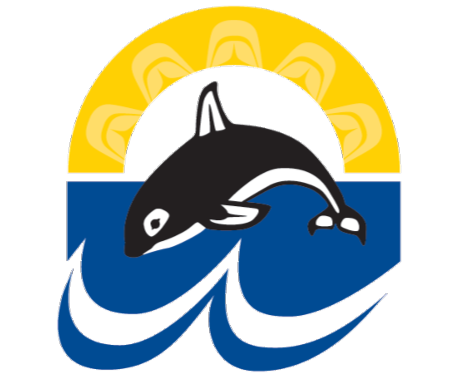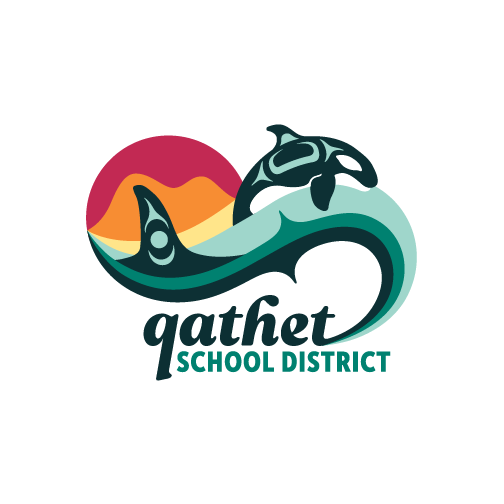2023-2024
Our Story
Originally located three kilometers from where it currently stands, Westview Elementary is a school steeped in tradition and rich in history. The original school, known as Grief Point Elementary, opened in September 1955 with ninety-five students. As the City of Powell River grew, and roads connected main streets to one another, so too did the population of the school. Young families with school-aged children built homes in the area as the school population began to grow. Grief Point Elementary has always had a strong academic focus, while being well-rounded in fine arts and sports. Of specific interest to note is that Robert Thirsk, Canadian astronaut, is an alumnus from Grief Point Elementary. Over the years, it became apparent that upgrades and expansions were necessary and in 2008, the decision was made to rebuild the school. Westview Elementary, which opened in 2010, was built to accommodate 380 students (300 + 80 K) and staff. The school design and master plan were developed to seamlessly incorporate a future capacity to 505 students plus staff. Located a few kilometers from the original site, Westview Elementary is a stunning building that hums with the energy of a student population of approximately 350 students, in 14 divisions/classrooms. Westview is the largest elementary school and engages a diverse student population from all over the Westview area as well as from the City of Powell River. Westview has a vibrant StrongStart program, as well as a highly engaged parent and volunteer community as well as a B4 Preschool program supporting up to 60 early learners in our community. Today, as you look up from the shores of the Salish Sea, above the town, on the brow of the hill, a traditional Coast Salish pole welcomes all to the state of the art building. The building is modeled after and designed with personalized learning in mind. The building features a variety of learning spaces that provide multiple instructional opportunities designed to go hand in hand with the new British Columbia curriculum. Upon entering the large glass doors, students, families and visitors are welcomed to the Learning Commons. This is a bright, flexible space for students to explore their interests in many different ways. A mobile computer lab allows students to research, fostering curiosity wherever they may be in the building. Down the hallway and to the left is a multi-purpose room with a state of the art kiln; attached to this is a fully operational kitchen. Teachers and students can take full advantage of this space to enhance learning with multiple cooking projects, elaborate artwork and multi-class presentations. The high school sized gymnasium houses intramural and extracurricular sports activities as well as allowing ample room for all classes to participate in daily physical education programs. Even further down the hallways is a music room that houses violins, trumpets, ukuleles, drums; enough for each student in every class. Just outside the huge glass exit doors, an outdoor learning classroom is covered by a solid pagoda, flanked by trees that are placed just right to provide shade on the sunny days. Beyond the pagoda, nestled in the grassy knoll at the back of the building, students easily access the classroom gardens, from which many harvests are picked.
Westview Elementary has a very dedicated staff who work hard to meet student needs. Academics are of utmost importance, and Westview is also known for a commitment to music (choir, modules, jazz) programs and athletic programs. There is great support of the school by community members, many of whom were Grief Point/Westview students as well.
Westview Elementary has a very active PAC who organize numerous fundraisers and volunteer throughout the school to support teachers, field trips, school wide events, and the purchasing of sports equipment for our students. Even though the school is just over ten years old, there continues to be excitement within the school and our wider school community about the “new” school and its ability to provide excellent, innovative, and creative learning opportunities for everyone.
Our Learners
Strengths:
- Students are keen to engage and happy to be at school
- Students look to adults for support, guidance, and direction
- Students have a strong interest in reading both fiction and non-fiction, as evidenced by the circulation numbers from the well-resourced Library
- Student love working with adults and are encouraged to take care of one another and to belong to our school family
- Our students are highly engaged in school and community activities such as hockey, soccer, dance, karate, music, et cetera
- Our students take advantage of opportunities to volunteer at school, join school clubs and participate in intramural and other school activities
- Our students are diverse in ethnicity, interests and socio-economically
- Our student thrive under high expectations and rise to meet these challenges
Stretches:
- Our students are diverse in ethnicity, interests and socio-economically, however have room to grow when it comes to being inclusive of the diverse student population
- Many students are at or below grade level in numeracy and literacy as per the reading data available from reading results
- Our students would benefit from greater involvement through home support specifically in literacy and numeracy
- Our students look to adults for all aspects of both home and school life, with relatively low levels of independence in doing so
- Our students are at the early stages of learning how to take initiative and be responsible for their own learning
District Priority 1: Cultivating an Ethic of Learning
Ensure early learner and students have the best possible learning experience (student success).
Goal 1 - Educational Excellence (Literacy and Numeracy): Westview Elementary will work on improving all students' literacy and numeracy rates across all levels
Action
Our Reading intervention team has completed our Dibels for this 2022-2023 school year. As expected, our reading results show growth with continued room for improvement. Last year, our assessment results showed that all students were reading at or above reading level based on the previous grade assessment.
- Reading Intervention Assessments such as Dibels, PM Benchmarks, and Performance Standards
- Reading Intervention Team focusing on our most necessary target areas based on formative assessments listed above
- Increase writing instruction in the areas of conventions of writing, cohesiveness and comprehension
- Using formative island numeracy assessments to inform target areas for math
- Build in math routines into daily instruction to improve number sense, fact fluency, and strategies
- Instill a love of reading and writing through engaging literacy practices
- Build our numeracy support team
- Collaboration time built into schedule with a focus on improving literacy and numeracy instruction
- Purchase numeracy related resources to improve numeracy levels
Evidence
- Dibels Assessments in September, January, and June
- PM Benchmarks and performance standards used as formative assessments
- Writing folders evaluated using BC performance standards
- Teachers work collaboratively on assessment practices to ensure uniform expectations across grade levels
- Assess numeracy in September and June using island numeracy assessments
- Grade group meetings and class review meetings are held in late September and early February to ensure we have clear insight into the needs and dynamics of each classroom.
District Priority 3: Cultivating Connection
Prioritize mental health, community connections, and social-emotional learning.
Goal 2 - Educational Excellence (Engagement and Connections): To improve our level of engagement and connections amongst parents, students, staff and the community at Westview Elementary and continue our work towards building an inclusive culture.
Action
- Use the climate matrix at first assembly and reinforced in classes to create a calm, quiet, welcoming learning environment
- Clubs that support our goals of Equity Diversity and Inclusion
- Engage parents in the classrooms
- School wide projects and fairs
- Maker space, STEM workshops and inquiry/science fairs
- PAC and staff socials together to get to know one another
- Build community through assemblies that include student recognition
- Welcoming atmosphere in the foyer for students and parents
- Grandparent/caregiver reading opportunities
- Parent info nights to share about teaching math and reading
- Welcoming and engaging Open House at the beginning of the year
- Parents would like consistent communication from staff in the forms of regularly sent messages from all classroom teachers
- Increased involvement in student leadership
- Weekly newsletter to families with regular updates on goals
- Intentional work at decolonizing our school.
- Continue our work on embedding indigenous pedagogy into our daily classrooms.
- Embed indigenous ways of knowing in classrooms
- Track all indigenous academic success rates and work acutely to ensure indigenous learners are achieving at the same level as their peers
Evidence
- Calm and quiet school environment with designated areas for cohort groups
- Thriving clubs that support our goals of equity and inclusion
- Increased parent engagement in classrooms volunteering, reading with students, and on school field trips
- Science fair is planned and executed
- Open House and one more event is held to strengthen relationships between PAC and staff
- Grandparent/ caregiver reading program is initiated in some classes
- Increased engagement from parent community at our various events
- Successful parent info nights that shared about teaching math and reading
- A thriving and involved student leadership team
- Teachers are using First People’s Principles of learning, accessing our Indigenous Ed. Team, and taking advantage of Indigenous Learning opportunities
- Use formative assessments to drive the teaching and learning for our Indigenous learners
Our Story is Beyond
It is our intention to communicate to all stakeholders our school goals. · We will articulate our goals in all school newsletters, regular meetings, school websites etc. · We will refer to the goals in parent teacher interviews · We will keep the goals at the top of the principal’s report at our PAC meeting · We will review our goals at every staff meeting and make changes according to dynamic updates The Westview staff are key to defining the vision for a dynamic Westview Elementary School. The experienced and skilled group of teachers, with many different strengths are committed to making the learning environment for students and teachers more challenging and rewarding.


